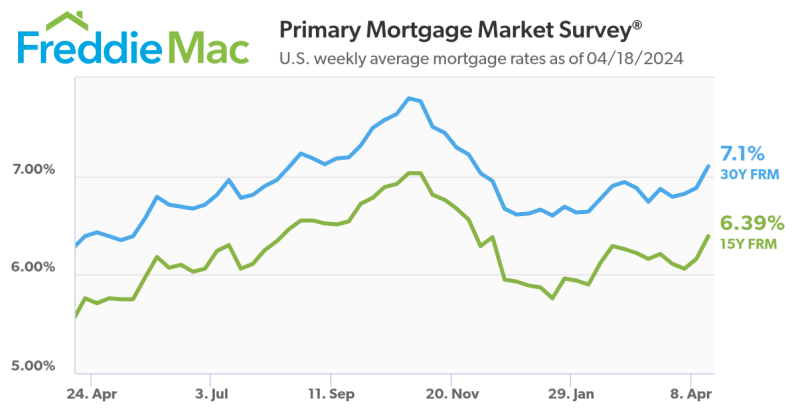Advertisement
High LTV Is Alive And Will Be Well Again
Layered Co-Insurance and the CRA: Creating an Innovative Solution for Affordable HousingMarisa RawlingNeighborhood Housing Services of America, Community Reinvestment Act, PMI, Layered Co-Insurance
At the end of the 20th century, the American economy is booming. New houses are selling well
and the prices of existing homes are soaring. Unfortunately, many people with low or moderate
incomes remain shut out of the housing market because they are either unable to save the
necessary down payment, or fail to qualify for a home loan under traditional credit and
underwriting guidelines.
The homebuilding and mortgage finance industry face a great challenge in continuing to make
homeownership opportunities both affordable and accessible to all. Access to homeownership for
the average working person is a cherished belief: Equal access to affordable credit is a logical
extension of that principle, but with today's escalating prices in the housing market, developing a
framework in which working people can compete equally in has been problematic.
One force working in favor of the homeownership dream is the Community Reinvestment Act of
1977, or CRA. This law shifted some of the responsibility for expanding affordable housing
opportunities to the private sector. Under CRA, lenders have a powerful incentive to focus on
traditionally underserved markets. As a result, a number of innovative programs have been
created that satisfy the need for affordable housing in low-income communities and the lenders'
need to make "safe and sound" loans.
Impact of the Community Reinvestment Act
Congress passed CRA in response to perceived underinvestment by lenders in communities from
which they accepted deposits, particularly in poor or disadvantaged communities. The legislation
mandates that "regulated financial institutions have a continuing and affirmative obligation to
help meet the credit needs of the local communities in which they are chartered." As a result, in
order to meet their communities' credit needs, many lenders and mortgage insurers are
committed to developing programs that not only effectively manage risk, but also expand
homeownership opportunities for low-and moderate-income consumers.
CRA encourages depository institutions to embrace creative and non-traditional lending. These
institutional lenders have been particularly aggressive in launching new affordable housing
initiatives since community lending records play a vital role in obtaining approvals from
regulatory agencies for their applications to merge or expand. Lenders have adopted community
lending goals, hired officers to specialize in CRA lending and sponsored programs to increase
lending to low-and moderate-income borrowers. However, institutional lenders continue to face a
unique challenge: How do they balance their CRA obligations with the business necessity of
profitable lending? How can they reconcile traditional underwriting guidelines with the risk
posed by untested programs? How can they meet community credit needs in a safe and
responsible manner?
Layered Co-Insurance: What Is It and How Does It Work?
Layered co-insurance represents one innovative solution to the challenge of safely expanding
lending to underserved markets, while simultaneously broadening access to homeownership and
improving an institution's CRA rating. Under this risk-sharing arrangement, the mortgage
insurance is structured so that financial responsibility is spread between the lender and insurer
through designated risk layers. Typically, the mortgage insurer is responsible for the first, and
usually expected, loss layer, as well as a third catastrophic layer, with the lender assuming a
predetermined second loss layer. The size and proportion of each layer will vary based on the
individual program characteristics.
Layered co-insurance offers important advantages to lenders seeking to enhance their community
lending records. Given the risk-sharing arrangement, the mortgage insurer is willing to
underwrite borrowers who may have otherwise not qualified under traditional guidelines for high
loan-to-value mortgages. Lenders with a mortgage insurance partner are able to design programs
requiring minimal down payments and are able to expand credit opportunities to low-and
moderate-income borrowers and communities. Because the risk and liability is shared, the insurer
may be willing to adopt more flexible underwriting guidelines targeted to a lender's particular
borrower or community. The mortgage insurer may also be more likely to expand its risk profile
because the lender also has a vested interest in approving only well-prepared and motivated
borrowers. By becoming familiar with the needs of a particular community and thoroughly
investigating the obstacles to achieving homeownership, lenders can customize their programs to
address those issues.
PMI Mortgage Insurance Company has received an enthusiastic response to its Layered Co-Insurance (LCI) product.
"We've been able to meet the nontraditional lending needs of several state housing finance
agencies, institutional lenders and nonprofit housing groups, such as the Neighborhood Housing
Services of America," said David Katkov, Senior Vice President of Product Development and
Pricing at PMI. "With LCI, we can customize underwriting guidelines to meet the unique needs
of individual lenders."
Chase Manhattan Mortgage, which uses PMI's LCI product, is a strong proponent of its value in
meeting CRA goals.
"It's been extraordinarily successful for us," said Penelope Simon, Senior Vice President and
Credit Risk Executive for Chase Home Finance. "When we first started working with PMI in
1994 to develop this product for Chase, there were very few programs designed for low-and
moderate-income borrowers. Sharing the risk with the insurer gave us the freedom to explore
lending to people without traditional savings or credit histories. Since then, we've done half a
billion dollars worth of loans using LCI, and not only have we been successful in putting people
in homes, but we've been able to keep them in their homes." She attributes the low rate of
delinquencies and foreclosures to the fact that the LCI product includes pre-and post-purchase
counseling for borrowers through the Consumer Credit Counseling Corporation.
In many cases, the lending programs developed under a layered co-insurance structure do not
meet secondary market standards. Financial institutions have either retained these loans in their
portfolio or have negotiated special sales with private investors. Regardless of whether the loan
is held in portfolio or sold to investors, the credit enhancement offered by layered co-insurance
structures plays a major role in helping to make these loans sound investments and in protecting
prospects for future portfolio liquidity. Even if a lender has ample portfolio capacity and no
current plans for sales of their CRA loans, having primary mortgage insurance, as developed
under a layered co-insurance structure, keeps an institution's options open. Institutions have
found that the existence of primary insurance coverage may allow for the flexibility of future
loan sales without compromising the program's effectiveness. This flexibility is an invaluable
tool for managing portfolio exposure.
Can Layered Co-Insurance Solve the Affordable Housing Crisis?
Prosperity in the 1990's has fueled a residential housing boom, yet housing construction still is
not keeping pace with the demand. With the dwindling supply of affordable housing not only in
the metropolitan areas but also in the suburbs, people with low or moderate incomes are faced
with fewer and fewer homeownership options.
It is a crisis that has not gone unnoticed in Washington. In a report released last year, HUD
announced that a record 5.3 million American households with very low incomes have a
"desperate need for housing assistance." As a result, CRA and its goals-to encourage financial
institutions to sponsor innovative housing programs for low-income borrowers in their
communities-will continue to be an important factor in the mortgage marketplace, with growing
influence.
"CRA lending should always be good lending," said Mary Widener, President and CEO of
Neighborhood Housing Services of America. "Its goal should be to reach beyond traditional
barriers to create successful homeowners. Layered co-insurance is an effective tool to help
deserving borrowers overcome such barriers as negative credit histories, which may be due to
family crises or other circumstances beyond their control. It's a winning approach for borrowers,
lenders, mortgage insurers-and the community."
Layered co-insurance has proven value in the struggle to create affordable housing. The risk-sharing partnership between lender and insurer allows the lender to meet its CRA obligations
while successfully managing the risk that may accompany such loans. As a result, communities
benefit as credit becomes more accessible to low-income individuals. The dream of
homeownership can become a reality.
Marisa Rawling is Senior Marketing Communications Specialist with PMI Mortgage Insurance
Company. She can be contacted at (415) 291-5362.
About the author





